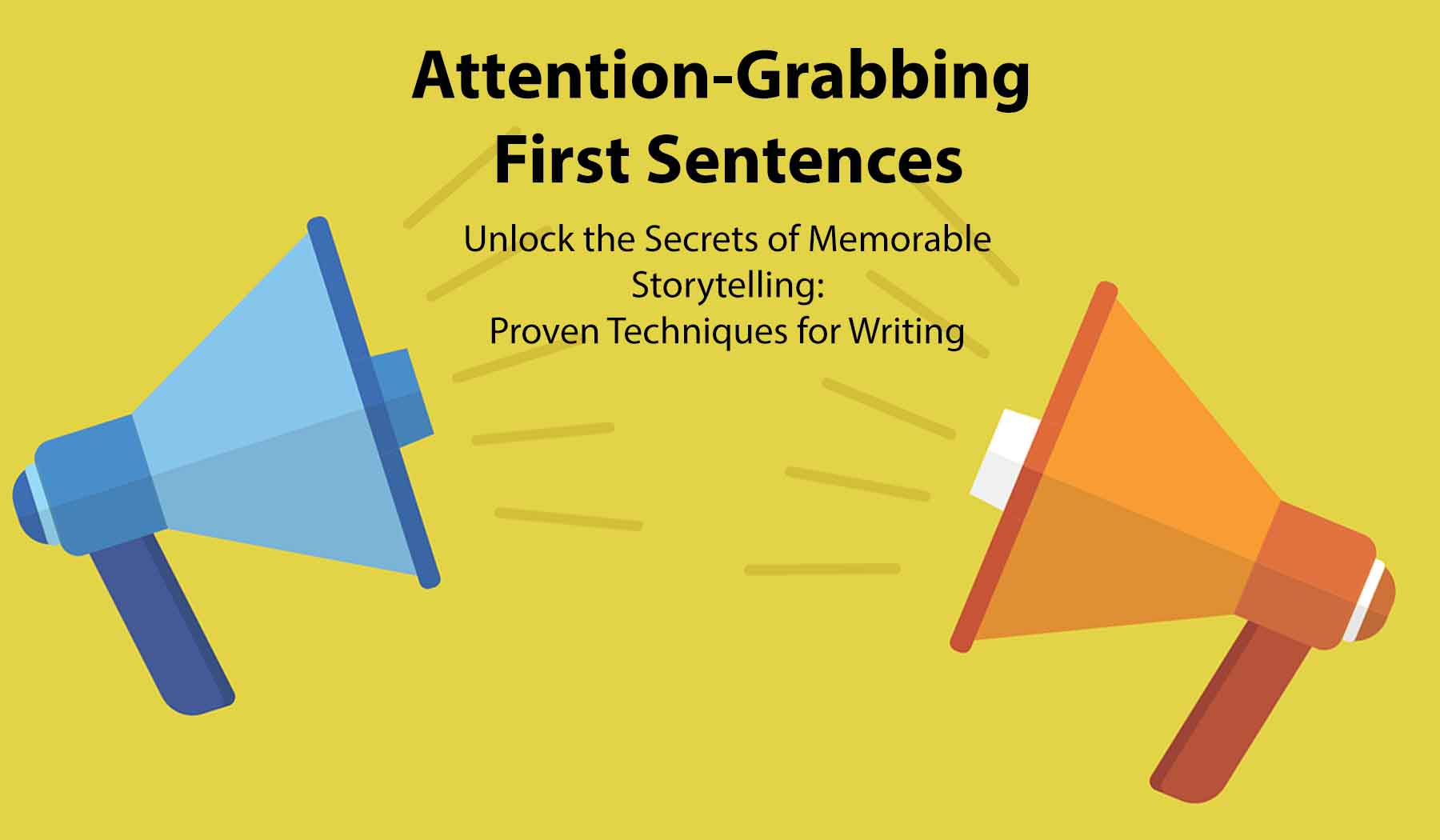The opening sentence of a story is like a gateway, inviting readers to step into a new world of imagination and intrigue.
Crafting an engaging and captivating first sentence is crucial for hooking your audience and setting the tone for the entire narrative.
Whether you’re a seasoned writer or just starting your literary journey, this blog post will provide you with six valuable tips and numerous examples to help you master the art of starting a story.
1. Start with a Vivid Description
One of the most effective ways to grab your readers’ attention is by opening your story with a vivid and sensory description.
By painting a picture with words, you can transport your audience into the heart of the story from the very first sentence.
Consider the following examples:
- “The sun hung low in the sky, casting a golden hue over the sprawling meadows.”
- “The aroma of freshly brewed coffee wafted through the air, mingling with the sound of distant chatter.”
- “Raindrops danced on the windowpane, creating a symphony of soft pitter-patters.”
2. Begin with an Intriguing Question
Piquing your readers’ curiosity right from the start is an excellent way to make them invested in your story.
By posing an intriguing question in the opening sentence, you create a sense of anticipation and encourage readers to keep turning the pages.
Here are a few examples:
- “Have you ever wondered what it would be like to step into the shoes of a time traveler?”
- “What if the key to unlocking the mystery lay hidden in an old, dusty attic?”
- “Do you believe in second chances, even when the odds are stacked against you?”
3. Use Dialogue to Spark Interest
Dialogue can be a powerful tool to kickstart your story.
Opening with a line of dialogue not only adds immediacy but also introduces characters and their personalities right away.
Take a look at these examples:
- ” ‘I can’t believe you did that,’ she said, her voice trembling with anger.”
- ” ‘It’s time to face your fears,’ he whispered, his eyes gleaming with determination.”
- ” ‘I never thought I’d see you again,’ he muttered, his voice filled with a mixture of surprise and relief.”
4. Set the Mood with an Engaging Action
Starting your story with an action-packed scene is an effective way to capture readers’ attention and immerse them in the story’s atmosphere.
Here are a few examples that demonstrate the power of an engaging action:
- “With a sudden leap, the cat chased the elusive beam of light across the room.”
- “The door creaked open, revealing a shadowy figure standing in the threshold.”
- “Her fingers trembled as she reached for the ancient artifact, unaware of the power it held.”
5. Begin with a Thought-Provoking Statement
Provoking your readers’ thoughts and emotions from the very beginning can make your story unforgettable.
Starting with a thought-provoking statement encourages readers to reflect and connect with the narrative on a deeper level.
Consider these examples:
- “In a world where dreams were currency, she was bankrupt.”
- “The stars blinked in the night sky, whispering secrets only the universe could hear.”
- “The clock ticked relentlessly, mocking his every attempt to slow down time.”
6. Invoke the Senses for Immersion
Engaging your readers’ senses can create an immersive experience right from the start.
By incorporating sensory details into your opening sentence, you can make your audience feel as if they are living the story alongside the characters.
Take a look at these examples:
- “The salty breeze caressed her cheeks as she stood at the edge of the cliff, overlooking the vast expanse of the ocean.”
- “The scent of freshly bloomed roses enveloped the garden, infusing the air with a delicate fragrance.”
- “The icy touch of winter’s first snowflake sent shivers down her spine, promising a season of magic and wonder.”
Captivate your Readers from the very First Word
Crafting an impactful opening sentence is a skill that can elevate your storytelling to new heights.
By incorporating vivid descriptions, intriguing questions, dialogue, engaging actions, thought-provoking statements, and sensory details, you can captivate your readers from the very first word.
Remember, the opening sentence sets the stage for the entire story, so take the time to experiment, revise, and polish until it shines.
With these tips and examples as your guide, you’re well on your way to creating compelling narratives that will keep readers coming back for more.
So, go ahead, let your imagination soar, and start your story with a sentence that will leave a lasting impression.









